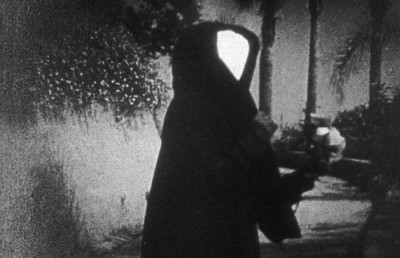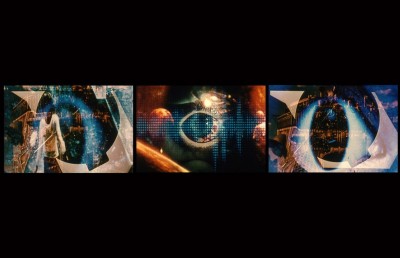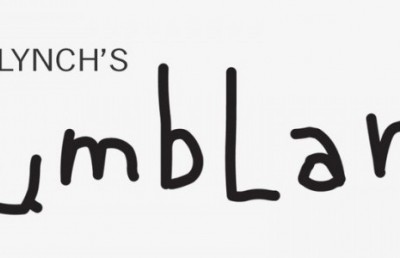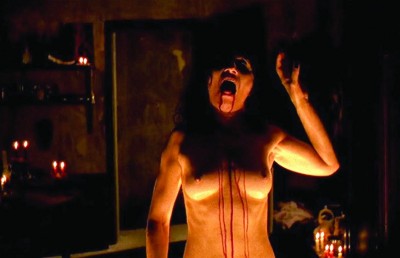Agit-prop Cuban Style
Master Montagist Santiago Álvarez
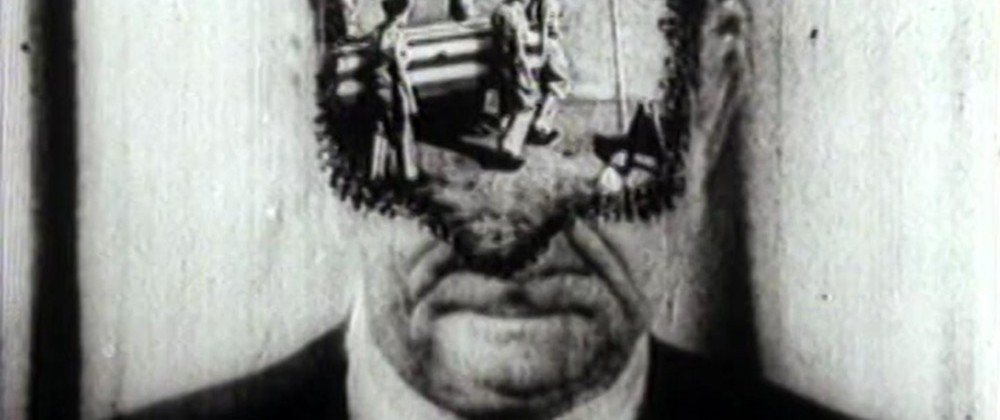
Santiago Álvarez was the first of the revolutionary Cuban filmmakers to make his mark on the world scene. He is also one of the greatest of all the montagists –filmmakers who put their faith in the powers of editing– moving from his position as head of ICAIC’s (Instituto Cubano del Arte e Industria Cinematográficos) newsreel department to become the director of a series of brilliant, short, experimental, rhetorical documentaries in the vibrant 1960s.
Santiago Álvarez was born on March 8, 1919, the son of immigrant Spanish parents. His father was an anarchist and when he was arrested, Santiago began to learn about politics at a very young age. Santiago began working as a printer’s apprentice at age 15 and joined the union. It didn’t take him long to become a strike organizer, and he continued his activism at night school and as a director of radio programmes. He travelled to the United States towards the end of the 1930’s depression, working as a coal miner and dish washer, and in New York City he enrolled as a student at Columbia University and the Communist backed Jefferson School. On Santiago’s return to Cuba he studied philosophy at the University of Havana. But, he also joined the Partido Socialista Popular (the Cuban Communist party) and helped found Nuestro Tiempo (Our Times), a left wing cultural group. During the underground struggle against Batista’s dictatorship he was arrested a few times. Later, in the 1950s he found work at a television station as a musical archivist which helped prepare him for newsreel work when he was one of the first employees at ICAIC in 1959.
Santiago Álvarez, journalist, was placed in charge of the Noticiero ICAIC Latinamericano the first edition of which was released in Havana on June 6, 1960. ICAIC had taken over the two privately owned newsreel companies, making the existing stock their archive, but the equipment which they seized was crude –ex., hand cranked Bell and Howell cameras with two minute film magazines. Lacking sound equipment, Álvarez and his assistants shot the first newsreels silent and added music and synch sound effects in the studio, while the filmstrip ran through the moviola. Thus, they were encouraged to experiment and Álvarez developed a highly original newsreel style, dispensing with the traditional “voice of God” narration. Once a week an approximately 10-minute newsreel would be produced. Sixty copies were made in the old black and white processing lab run by “Tuto” and his wife and were distributed to theatres around the country. Since some people would not get to see the film until two or three months after it was made, Álvarez and co. made sure the material was not too time bound. Santiago Álvarez lost two nights sleep every week in personally directing each newsreel for no less than fifteen years. When he finally relinquished this role, he maintained control over the Newsreel Division, which in 1982 employed twenty five people, including seven cinematographers and three directors.
Initially, the first newsreels and documentary films that Álvarez made –which were often expanded versions of the newsreels– “imitated,” in his own words, “the capitalist newsreels.” But in 1963, with Ciclón (Hurricane), a 22 minute documentary that was developed as a special newsreel out of Noticiero #175, Álvarez found his form. The film used footage shot by various Cuban cameramen of Hurricane Flora and the subsequent rescue and cleanup operations in the provinces of Camaguey and Oriente. Remarkably, voice over narration was dispensed with altogether, as the sound of a helicopter was used as a structuring device and a metaphorical signifier for Cuban rescue operations. In 1961, Álvarez had been appointed head of the short films division of ICAIC, and so for six years he ran two operations. Perhaps this explains why Álvarez blurred the distinctions between documentary and newsreel, but, in any event, in 1965 he directed the prototypical Álvarez short, Now. He was probably thinking of this six-minute gem, when once he said, “Give me two photographs, a moviola and some music and I’ll make you a film.”
Using mostly photographs clipped from American magazines such as Life, Álvarez creates a dynamic montage of images in juxtaposition with the lyrics of “Now” sung by Lena Horne to the tune of the Jewish folksong, “Hava Nagila.” The resulting film, Now, which is the exact length of the recorded song, is a remarkable precursor to the music video format, 20 years ahead of its time. Indeed, in presenting a vivid critique of racism in the U.S. and as a call for action, Now stands as a model of the form, far superior to most self aggrandizing music videos. Álvarez was almost certainly influenced by the photomontages of the German communist John Heartfield from the 1920’s and 1930s, but the only film collage work of a marginally left political nature that pre dates Now is that done in Northern California by Bruce Conner and Bruce Baillie. It is very unlikely that Álvarez saw any of those films made by his American contemporaries.
During the opening credits of Now, percussive music sets the beat for an angry defiant statement. The screen is divided into three panels which initially sets up a juxtaposition of an optically printed image of Martin Luther King looking right, apparently confronting a similarly modified photograph of Lyndon B. Johnson, (LBJ) looking left.
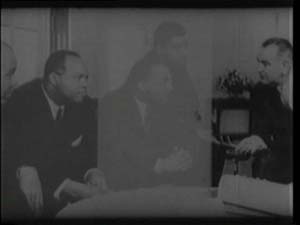
A fade to black at the end of the credits is followed by a triptych of the same over exposed photograph of Lena Horne in profile, as she starts to sing on the sound track. This dissolves to another three panel presentation of Lena Horne looking more towards the camera, which in turn dissolves to her face directly addressing the audience, again multiplied three times. The film begins in earnest with photographs of American black protestors, including children being oppressed by white police. The effect is dynamized by zooms from Rodriguez and Fernandez’ rostrum camera and astute editing which is designed to construct a sense of narrative confrontation. The next set of images encourages the viewer to reflect on America’s past. Special effects cause Abraham Lincoln’s head to emerge out of a black child’s eyes, beginning a key thematic motif of how the message of brotherly love initiated by the Constitutional fathers of the United States had gone astray during LBJ’s time in office. The words of the song echo this sentiment, while calling for immediate change:
Now, now, come on let’s get some of that stuff
It’s there for you and me, for every he and she
Just want to do what’s right constitutionally
I went to take a look in my old history book
It’s all there in black and white for all to see
Now, now, now, now, now, now
Everyone should love his brother
People all should love each other …
Perhaps, it is puzzling that a film would be made for Cuban people where English lyrics provide ironic commentary and a rallying cry, since some of the complex sound image juxtapositions in Now??’s intellectual montage would be missed by a Spanish speaking audience. But, in North America where Lena Horne’s recording of “Now” was banned, the effect on college audiences and left political groups was profound. Álvarez’ rejuvenation of Soviet montage and pamphleteering inspired films made by San Francisco and Third World Newsreel (who also released his films), while specific effects, like the apparent machine gunning of black holes in white, to produce the film’s title, ??Now, clearly influenced Jean Luc-Godard, as well as the Argentinians Solanas/Getino in their making of the all important documentary film La hora do los hornos (The Hour of the Furnaces).
Santiago Álvarez continued his criticism of U.S. internal politics under Johnson with LBJ (1968), probably his most experimental film. The “LBJ” of the title refers not only to the president’s initials but also to those of the three great American political leaders assassinated in the 19601s: Martin Luther King, and the two Kennedys, Bobby and John (or, “Jack” as Álvarez prefers to call him). Although it is never made explicit, LBJ suggests by association that a connection can be made between the three assassinations and Johnson’s rise to power. Seemingly, this was Álvarez’ own idea, not the official Cuban one, but, given the renewed interest in President Kennedy’s demise, generated by Oliver Stone’s JFK (1991) –suggesting LBJ’s complicity in conspiracy– Álvarez’ film would seem to be prophetic and influential. More importantly, though, LBJ presents a satire on U.S. culture and politics. A key image in the film is that of a fruit machine, where the letters L, B, and J appear in succession. The image is suggestive of American political life being a lottery and a (deadly) game and also connotes a world of money with the gambling capital of Las Vegas as a central symbol. The shot is one of the few constructed purely for the film as the rest consists of a complex collage of found materials.
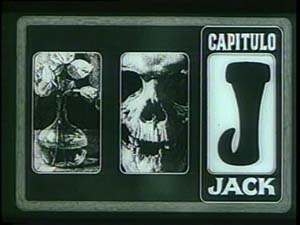
A cartoon of LBJ as a young cowboy emerges as a key icon. The sequence in which it appears is typical. At the end of the first section of the film, on “Jack” Kennedy, a photograph of him dissolves into one of LBJ. This is followed by a dissolve to a picture of a medieval knight, and another to a composite image of LBJ’s face enclosed by a knight’s visor. Then a dissolve connects Johnson as knight to Johnson as cowboy to begin the film’s second episode, on Martin Luther King. This short montage sequence is packed with allusions and connotations. It mocks the European tradition of chivalry –of which Kennedy was so enamored– while connecting it to the Hollywood myth of the western hero. Both western myth systems are to blame it seems for the existence of political assassinations in America. The effect is compounded by the intercutting of clips from widescreen Hollywood movies, projected squeezed (without the use of an anamorphic lens) and in black and white. Their distorted presentation intensifies LBJ’s satiric edge, and, even draws attention to the relative impoverishment of the Cuban film industry. The clips are, of course, taken from action films –Westerns, War films and historical epics– and all emphasize the confrontation of battle.
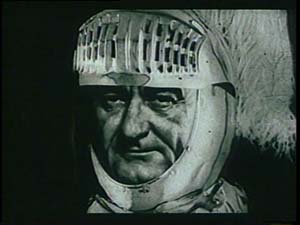
In the section on King, the pattern is continued, with the added dimension of racial conflict. Throughout LBJ, voice over narration is absent and only a few titles –often using “found” words on banners and placards– and a few words from speeches together with the lyrics –of songs convey Álvarez’ message verbally. For example, during the King episode, Miriam Makeba’s voice can clearly be distinguished, and black activist Stokely Carmichael speaks. Brilliantly, Santiago Álvarez and his team took the newsreel, compilation format to the edge of formal experimentation in LBJ, while constructing a fierce and witty tract on the dangerous nature of media influence on contemporary American society in general, and the political arena in particular, Even more spectacularly, in its chaotic dynamism, LBJ formally echoes the world it satirizes, and prefigures the post modernist texts of the 1980’s.
Michael Chanan has acknowledged three principal themes in Álvarez’ films: “the struggle against Yankee imperialism, solidarity with Vietnam,” and “militant support for the achievements and plans of the Cuban revolution.” While Now and LBJ follow the very personal fascination that Álvarez had for the contemporaneous president of the United States, they also clearly address the first of these themes. So too, do the other two films in this survey, Hanoi, Tuesday 13 and 79 primaveras. But they are also highly representative of Álvarez’ “solidarity with Vietnam.”
The title of Hanoi, Tuesday 13 refers to December 13, 1966 shortly after Santiago Álvarez arrived in Hanoi, when American aircraft attacked at 2:50 in the afternoon while he was out filming. The film is constructed like Now on the basis of juxtaposition, but is closer in form to the more traditional documentary. The opening, though, directly implicates LBJ and his family in the war with Vietnam, and in its satirical collage provides the blueprint for LBJ. Hanoi, Tuesday 13 begins on colour footage of Vietnamese artworks, while a voice over counterpoints their serene beauty with a tale of the struggle of the Anamite people of South East Asia to assert their independence. The verbal text is taken from a 19th century children’s book, La Edad de Oro (The Golden Age) written by the Cuban national hero, Jose Marti. The section on LBJ, follows the main title, Hanoi, Tuesday 13, which is animated to rush out at the viewer. A similarly dynamized title “A boy was born in Texas in 1908” is then juxtaposed with a shot of birthing a cow, setting an aggressive, lampooning pattern for the sequence. Shots of youthful demonstrations representing dissent within America, heighten the mode of counterpoint and confrontation.
When the locale of Hanoi, Tuesday 13 switches to Vietnam the pace of the editing slows somewhat. Scenes are built of shot clusters, where the impression obtained is one of a community living in solidarity and harmony. For example, a scene of people working in rice fields is followed by one of people transporting food in the city, Hanoi. The film works as a kind of instructional documentary, and it succeeds on this level without an annoying voice-over commentary. We learn about Vietnamese fishing practices through observation and later we see the making of concrete tubes. At first, it isn’t clear what they are for, but gradually it is revealed that they are used as air raid shelters. Here Álvarez chooses to employ a fast tracking camera to accentuate the imminent danger of an air attack. People are shown to raise and lower the protective lids of their sidewalk shelters as they look up to the sky, while the camera scans this activity from a moving car. During the film, this “look to the sky” becomes a stylistic motif, where high angle shots of individual Vietnamese are accompanied by low angle, extreme long shots of American aircraft in the sky. The American attacks function in jarring juxtaposition with the daily life of the Vietnamese. Michael Chanan calls the basic structural principle that Álvarez uses here, one of “interruption and resumption.” Indeed, the use of montage has a disturbing, disruptive effect, but also, an energizing one. A recurring title, “We turn anger into energy,” moving from the depth of the screen, out at the viewer, provides a rhythmic pulse to the work.
A scene showing the brutal devastation wrought by the attack is, perhaps, gratuitous with its emphasis on images of human destruction, but, elsewhere, Hanoi Tuesday 13 provides a brilliant contrast to American filmed versions of the Vietnam War (both before and since) with its dynamic structure and with its depiction of the quiet resolve of the Vietnamese people. Similar in its reverence is 79 primaveras, an homage to the great Vietnamese leader, Ho Chi Minh who had died in 1969, shortly before the film was made.
Many, by now familiar, Álvarez features are found in 79 primaveras, including the collage of disparate materials –still photographs, drawings, archival footage, etc.– strange juxtapositions of sound and image, a limited use of voice over, but with a dramatic use of titles. It is also defiant in its criticism of official U.S. policy while pointing out the positive nature of dissent led by American youth against the Vietnam War. However, like LBJ from the previous year, 79 primaveras is boldly experimental. At the very beginning of the film, time lapse cinematography of flowers coming into bloom dissolving into other similar images mark the “springtimes” of Ho Chi Minh. But another dissolve leads to a shot of bombs dropping and a complexity of associations/ideas are created in the viewer’s mind through this montage juxtaposition. A negative image of a face is revealed to be Ho Chi Minh’s when it changes to positive, and then a cut leads to an extreme close up of his eyes. Not only are we led to question here as a viewer of documentary reality, and to think carefully about what we are watching, but a degree of reflexivity is achieved: we struggle to see and are left with the image of eyes, themselves searching and questioning. This thematic “metaphor on vision” reaches its apex when, after an exciting résumé of Ho Chi Minh’s victorious life, the film arrives at his funeral, scored to the music of Iron Butterfly, no less!! A flicker effect distorts the image of mourners walking past their leader’s coffin, and a view of their feet turns to negative. Superimposition multiplies the mournful effect. It is as if the terrible anguish is destroying the film, and following a cut between a shot of U.S. war protesters burning their draft cards as well as their flag and one of flowers for Ho Chi Minh, this in fact happens. The title, “Don’t Let Disunity in the Socialist Camp Darken the Future” appears to be torn apart into little pieces, leaving only a blank frame. Gunfire on the soundtrack seems to cause scratches and sprocket holes to appear over images of combat, tearing gashes break the image apart, and eventually a freeze frame burns up in front of our eyes. Such devices, of course, became typical of “Structural Film” experiments in North America and Europe during the late 60’s, but, brilliantly Santiago Álvarez discovered an astute political analogue for filmic reflexivity, recalling Buñuel and Dali’s surrealist attack on bourgeois sensibility with Un chien andalou in 1928. After being made sensitive and attentive to “seeing” in the early part of Hanoi, Tuesday 13, we must surely feel the attack on the senses incurred by such a militant self destruction of the medium all the more.
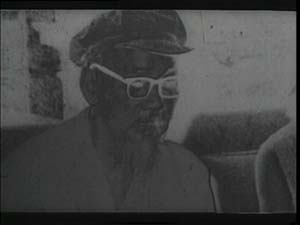
Santiago Álvarez never quite regained the heights he achieved with his short films of the mid, to late 60s. He began to make longer films, and perhaps the added length worked against dynamic experimentation. Perhaps he felt that the longer format demanded a more reserved use of film style. It has also been suggested that he needed the Vietnam War to stir his revolutionary fervor. Michael Chanan argues strongly for the greatness of two feature length documentaries on Fidel Castro’s foreign visits –De America soy hijo y a ella de debo (Born of the Americas, 1972), of Chile, and Y el cielo fue tomado por asulto (And Heaven Was Taken by Storm, 1973), of Eastern Europe and Africa –and another made to celebrate 30 years of the Democratic Republic of Vietnam, Abril de Vietnam an el ano del gato (Everyone’s October, 1977). And, Álvarez has occasionally found his true form again when called upon to make a film in urgent response to a crisis –e.g., El tigre salto Y mato, Dero morira … morira (1973) on the rightist coup d’etat in Chile. Álvarez is also still capable of making works of real humour and charm, especially when dealing with one of his favourite subjects, like Fidel. Mi hermano Fidel (1977) follows the Cuban leader into the home of a 93 year old acquaintance of Jose Marti, who is now blind and who takes the duration of the film to realize who his illustrious interviewer actually is. Indeed the fastest working and most prolific filmmaker in Cuban history remains amazingly youthful, and still has the potential to surprise us with something new and exciting.
Postscript:
This essay was written about twenty years ago. Timothy Barnard and myself were working on a filmography of Latin American cinema, which was eventually tightened to a filmography of South American Cinema, published by Garland in 1996. Thus, entries we had written on Cuban and Mexican films were excised. It is nice to finally have this piece on Santiago Álvarez published, since I have always considered him to be the most important Cuban filmmaker. His work has never been easy to see. I travelled to New York City in June, 1981 to watch 16mm prints of Now, Hanoi martes 13 (Hanoi, Tuesday 13th, with an English voice-over, and in black-and white, only), La guerra olvidada (in Spanish, only), L.B.J., and 79 primaveras (also in Spanish) at 3rd World Newsreel. Remarkably, this organization is still in business, and they still rent most of these films, as films. At that time, another marginal New York-based distributor, Unifilm had a few Álvarez titles in their catalogue, and two non-profit Canadian film distributors, Idera in Vancouver and DEC in Toronto also had the rights to a few of his films. But all of these companies are long gone. The Cinémathèque Québécoise occasionally show their excellent 35mm prints of Ciclón, Now, LBJ, and French versions of Hanoi martes 13 and 79 primaveras, while the Cinematheque Ontario are planning to show English sub-titled versions of the last two and Laos: The Forgotten War (La guerra olvidada) in their upcoming series on the Vietnam War.
We can rejoice that, finally, eight Álvarez films have appeared on DVD in North America, all with optional English sub-titles: Now, Cerro Pelado (1966), Hanoi martes 13, Hasta la victoria siempre (Always Until Victory, 1967), LBJ, 79 primaveras (79 Springs), El sueño del pongo (The Servant’s Dream, 1970), a rare fictional film, and, El tigre saltó y mató, pero morirá … morirá (The Tiger Leaps and Kills But It Will Die … It Will Die, 1973). The quality of the copies varies, but it is good to see the colour sequences at the beginning and end of Hanoi martes 13, which are rendered in black and white on most prints, and pinkish colour on others.
Thanks to (very) independent U.S. filmmaker Travis Wilkerson for publishing through his company, Extreme Low Frequency, “He Who Hits First, Hits Twice: The Urgent Cinema of Santiago Álvarez” this double DVD set which also includes a “documentary” he directed on the filmmaker, Accelerated Under Development (2003). Unfortunately all of the interview footage Wilkerson shot with Álvarez and his colleagues was unusable, delimiting the scope and usefulness of his tribute, and ironically my own DVD copy jams just at one of the points in Accelerated Under Development where Wilkerson is demonstrating his faulty video, blamed on the Russian camera he was stuck with! But, some wonderful photographs are provided of the Cuban with his family, Fidel (of course), Ho Chi Minh, Salvador Allende, and fellow radical filmmakers Joris Ivens and Jean-Luc Godard, who once called Álvarez the “world’s greatest film editor.” In his time, he surely was.
Santiago Álvarez was diagnosed with Parkinson’s disease in 1991, the year he directed his last film. He died on May 20, 1998.
Bibliography
Chanan, Michael. “The Revolution in the Documentary.” In The Cuban Image. London: BFI Publishing, 1985, pps. 177-202.
Films cited in the Review:
1. NOW
Year of Production: 1965
Cinematography: Pepin Rodriguez, Alberto Hernandez
Editing: Norma Torrado, Idalberto Galvez
Music: “Now” sung by Lena Horne to the tune of “Hava Nagila”
Distribution, USA: 3rd World Newsreel
Running Time: 6 minutes
2. HANOI, MARTES 13 (Hanoi, Tuesday 13th)
Year of Production: 1967
Cinematography: Ivan Napoles (black & white and colour)
Rostrum Camera and Special Effects: Jorge Pucheux, Pepin Rodriguez, Adalberto Hernandez
Editing: Norma Torrado, Idalberto Galvez
Music: Leo Brouwer
Sound: Carlos Fernandez
Text: Jose Marti, La Edad de Oro
Distribution, Canada: DEC; USA, 3rd World Newsreel
Running Time: 38 minutes
3. LBJ
Year of Production: 1968
Rostrum camera: Pepin Rodriguez, Adalberto Hernandez (black & white and colour)
Special Effects: Jorge Pucheux
Editing: Norma Torrado, Idalberto Galvez
Music: Leo Brouwer, Pablo Milanes, Miriam Makeba, Nina Simone, Carl Orff
Distribution, USA: 3rd World Newsreel
Running Time: 18 minutes
4. 79 PRIMAVERAS (79 Springs) US release title, 79 Springtimes of Ho Chi Minh
Year of Production: 1969
Cinematography: Ivan Napoles
Special Effects: Jorge Pucheux, Pedro Luis Hernandez, Pepin Rodriguez, Santiago Penate
Editing: Norma Torrado
Sound and Music Editor: Idalberto Galvez
Location recording: Raul Perez Ureta
Sound Engineer: Carlos Fernandez
Texts: Ho Chi Minh, Jose Marti
Distribution, USA: 3rd World Newsreel
Running Time: 25 minutes



